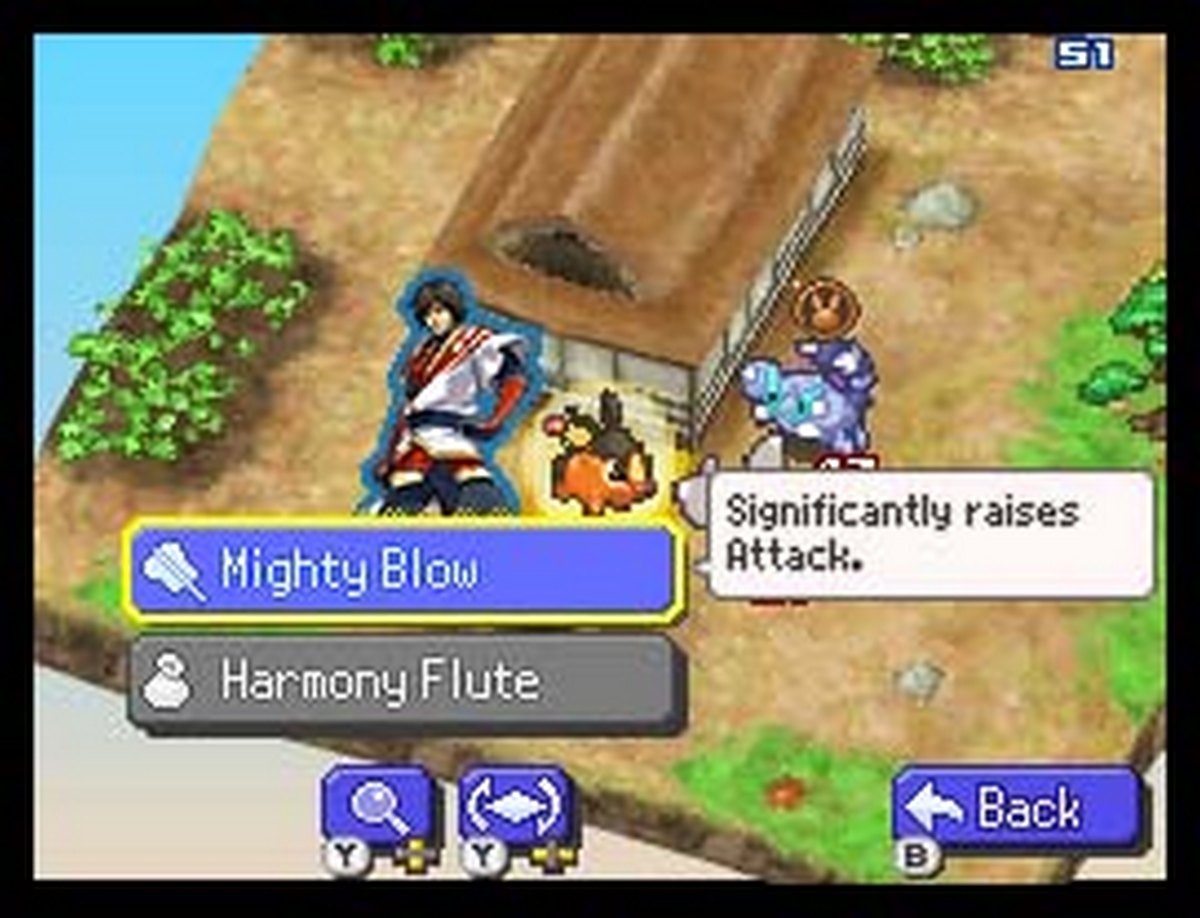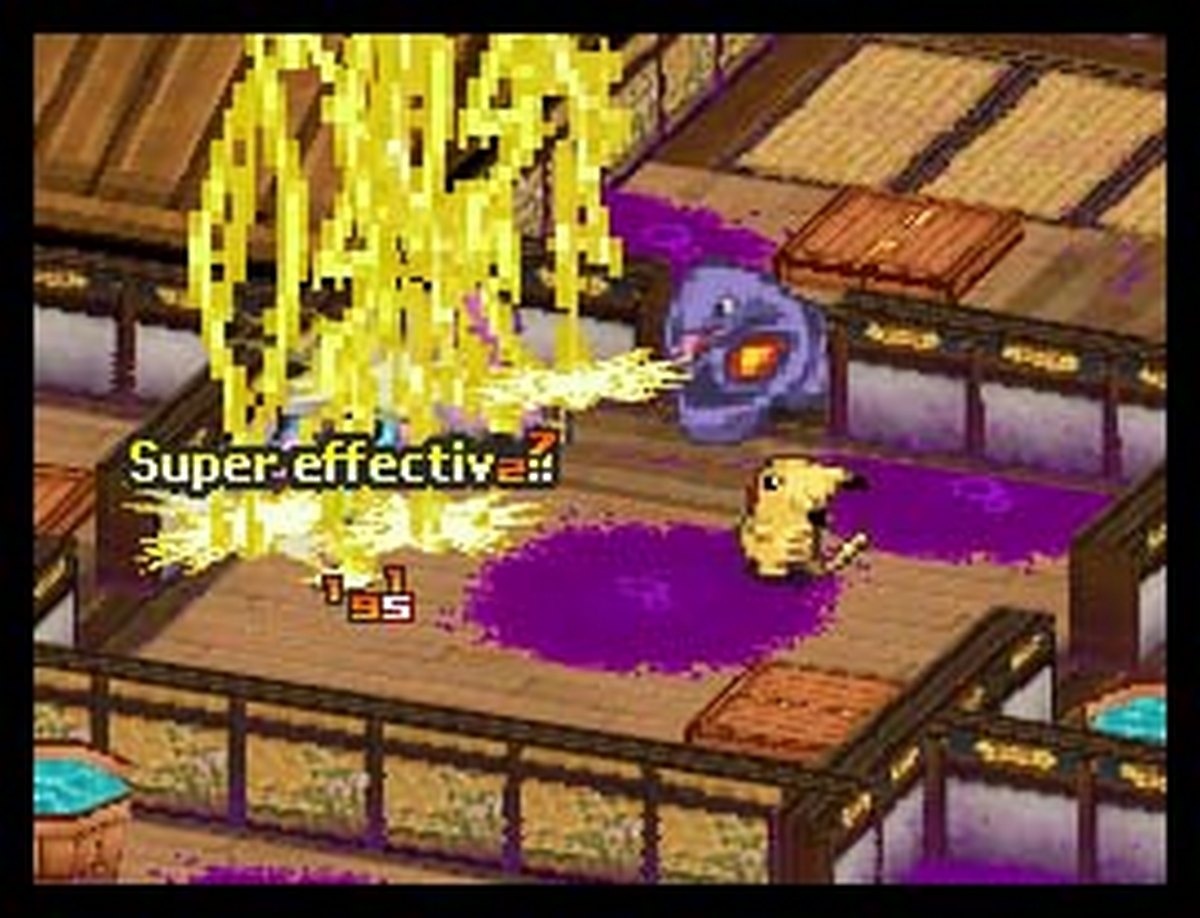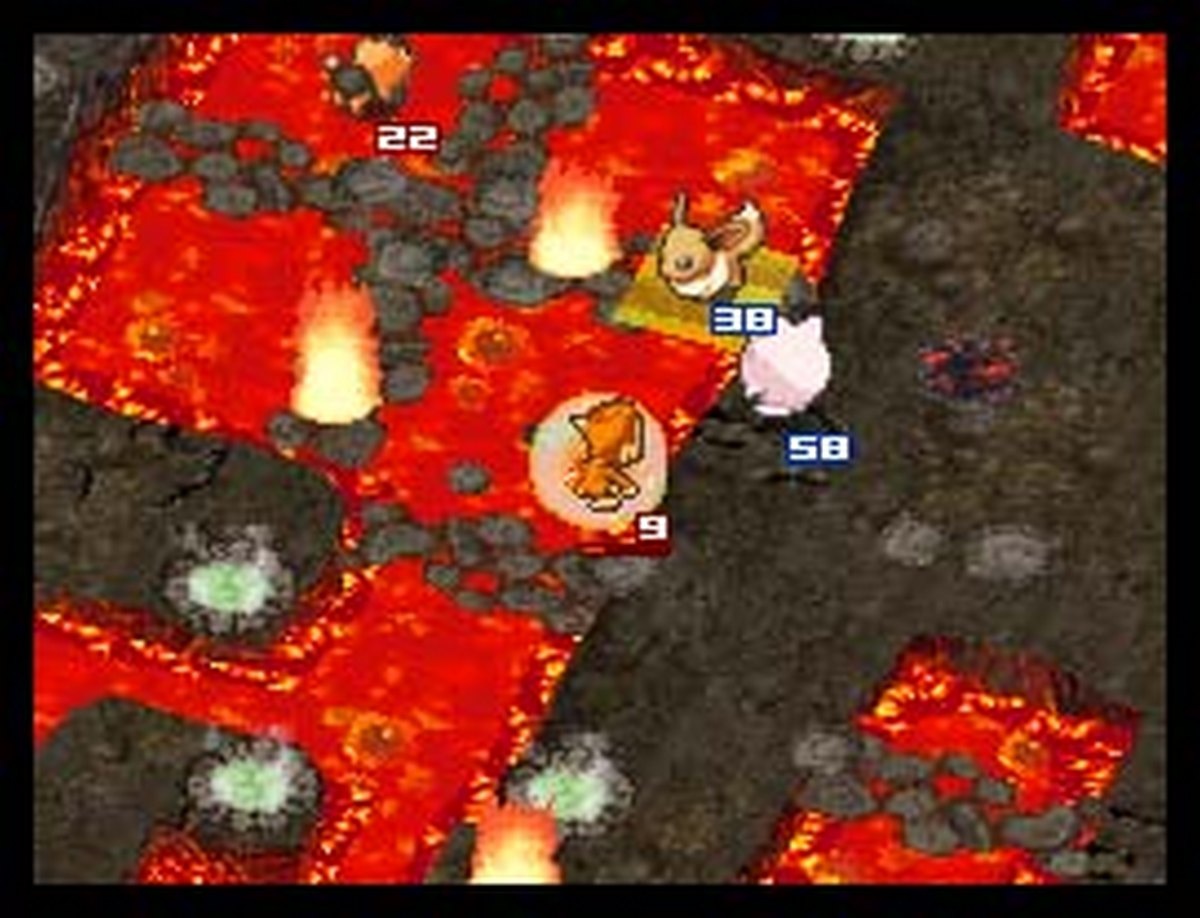The Pokemon franchise has thrived for decades as a collect-'em-all adventure, but the potential for more outlandish experiences has always been there. Enter Pokemon Conquest. One part management simulation, one part combat extravaganza, this new approach to the expansive universe forces you to think beyond the rock-beats-paper routine that has been a staple since red and blue were the only colors that mattered. Although this dose of inventiveness breathes some fresh air into a sometimes stagnant world, the combat has been simplified to such an extreme that much of the fun is sapped away.
Pokemon Conquest takes place in the faraway land of Ransei, an island country modeled after Japan. You begin as an up-and-coming warlord. It's important to note that in this universe, warriors and warlords aren't highly trained soldiers that terrorize the battlefield--they're special individuals with the innate ability to train and control Pokemon to do the terrorizing for them. The local legend states that once Ransei is united, a legendary, incredibly powerful Pokemon will appear, and there are those who want such power for themselves.
The characters in the game are based on real-life historical generals from Japan's tumultuous Sengoku era (though copious liberties have been taken with their portrayals), and much as they did in reality, they are constantly fighting over territory in Ransei. The primary villain, Oda Nobunaga, is likely familiar to anyone who has played a game in this setting before, and he's out to wreak havoc by using the legendary Pokemon to destroy Ransei. It's up to you to conquer and unite Ransei's kingdoms under your banner and put a halt to Nobunaga's ambitions.
You shift between two primary game modes in Pokemon Conquest: simulation and combat. In simulation mode, you're in charge of managing your kingdoms, warriors, and resources by moving a cursor about a map of Ransei. Each kingdom has an array of facilities, including shops, energy-restoring Ponigiri dealers, and unique structures that confer stat boosts or produce bonus items. Up to six warriors can be stationed in a given kingdom, and the arena lets you recruit and train new warriors as well as new Pokemon.

The simulation mode is turn-based, with each warrior getting a single action per turn, thus forcing you to think carefully about how you want to spend your time and resources. For example, do you want to spend a turn feeding a warrior's Pokemon to raise its energy for a while, or instead risk sending it into a skirmish in a weakened state to try to boost its strength? Using your time wisely and strategizing effectively helps you expand your kingdom and build your Pokemon army's strength, and seeing the results is satisfying. The simulation sequences are enjoyable, though they may take some getting used to since some of the elements of this mode aren't explained well in-game.
What will ultimately determine your success as a unifier of Ransei, however, are the combat sequences. These play out in typical strategy-RPG format: you and your opponent take turns moving characters around a grid-based combat arena, using your Pokemons' movement and combat skills to try to either eliminate your opponent's troops or perform another victory objective within a certain turn limit. Things like spacing, arena height, and positioning all play a key role, because certain Pokemon use exclusively ranged or crowd-clearing attacks, and friendly fire can and does happen.
Pokemon also come with individual abilities that affect their combat performance, such as getting stat boosts with low HP or dealing more damage when surrounded by allies. Furthermore, each warrior has a unique special ability--increasing movement range, curing status ailments, and so on--and the ability to use a held item, both of which can be activated once in each battle. Pokemon become stronger after each battle, though specific warriors have limits on whether they can "link" with certain critters and how far, putting a cap on their strength/evolutionary capabilities and forcing you to search for more suitable partners in pugilism.

The combat has some interesting elements, such as dynamic arenas with specific gimmicks, that must be taken into account: floating islands with springboards that send your Pokemon bouncing all over the place, or a mechanical castle with passages that open and close as Pokemon step on gears. The problem is that, for the most part, the combat is slow paced and limited. Movement and attack animations are slow, with no option to turn them off entirely, only speed them up slightly (which you definitely want to do).
Though strategy RPG combat rarely moves at a brisk pace, the small arenas and limited combat capabilities of the Pokemon exacerbate the already slow action, making it feel constricting and dull. Unlike in many strategy RPGs where characters gain more abilities as they level up, the Pokemon have only a single type of attack of set range they can use, and it is all they will ever be able to use until they evolve and it changes into a different single type of attack. Since you can only take up to 6 troops into combat and you're usually fighting in tiny spaces, you don't have a lot of options when it comes to how you want to tackle your foes, which kills a lot of the fun involved in strategizing.
If you're an experienced strategy RPG veteran, you'll find Pokemon Conquest to be quite easy. The web of Pokemon types and countertypes, where certain moves have greater or limited effects on Pokemon of certain types of affiliations, is in full effect in Pokemon Conquest, so conquering enemy kingdoms is usually just a case of bringing an army of counter-picked Pokemon strong against that territory's affiliation. Later battles try to throw a wrench into things by having the opponent use at least one Pokemon that counters the types you're most likely to pick, but this is easily handled by bringing in a strong all-purpose Pokemon that isn't weak to anything the opponent might use.

Other kingdoms can invade your territory, but this usually doesn't happen unless you leave a castle in a vulnerable location woefully underprotected. Even then, your lost territory can be easily reclaimed the next turn. Eventually the whole game starts to feel repetitive and by-the-numbers, with your foes content to just sit and wait until you're strong enough to invade and conquer them.
Pokemon Conquest's concept and setting are unique, and the curiosity factor alone adds a good amount of appeal and fun to a fairly standard strategy RPG. It's a shame that the combat doesn't live up to the potential of its theme, but if you can get past the limited, simplistic battles, there is certainly enjoyment to be had from this Japanese-flavored exercise in animal army conquest.
